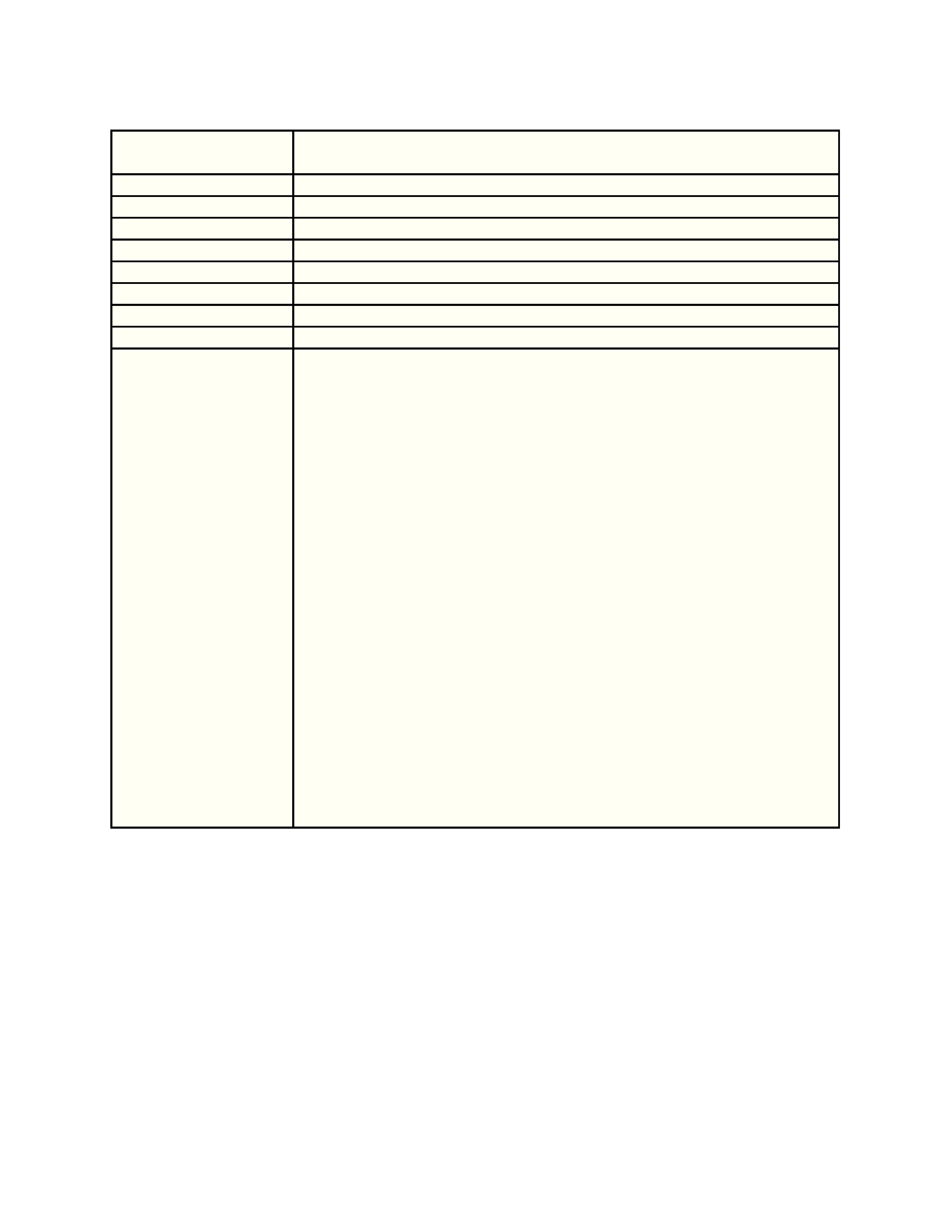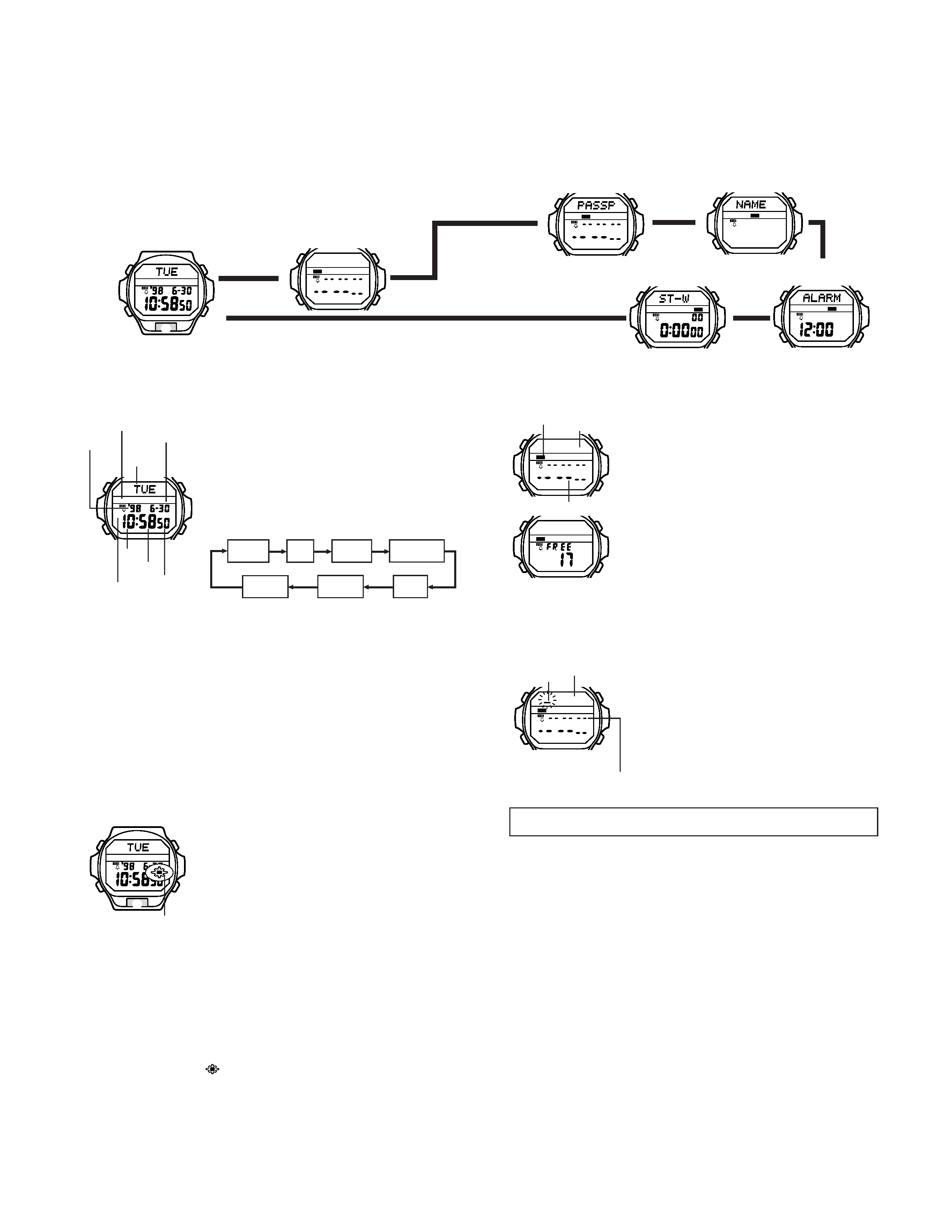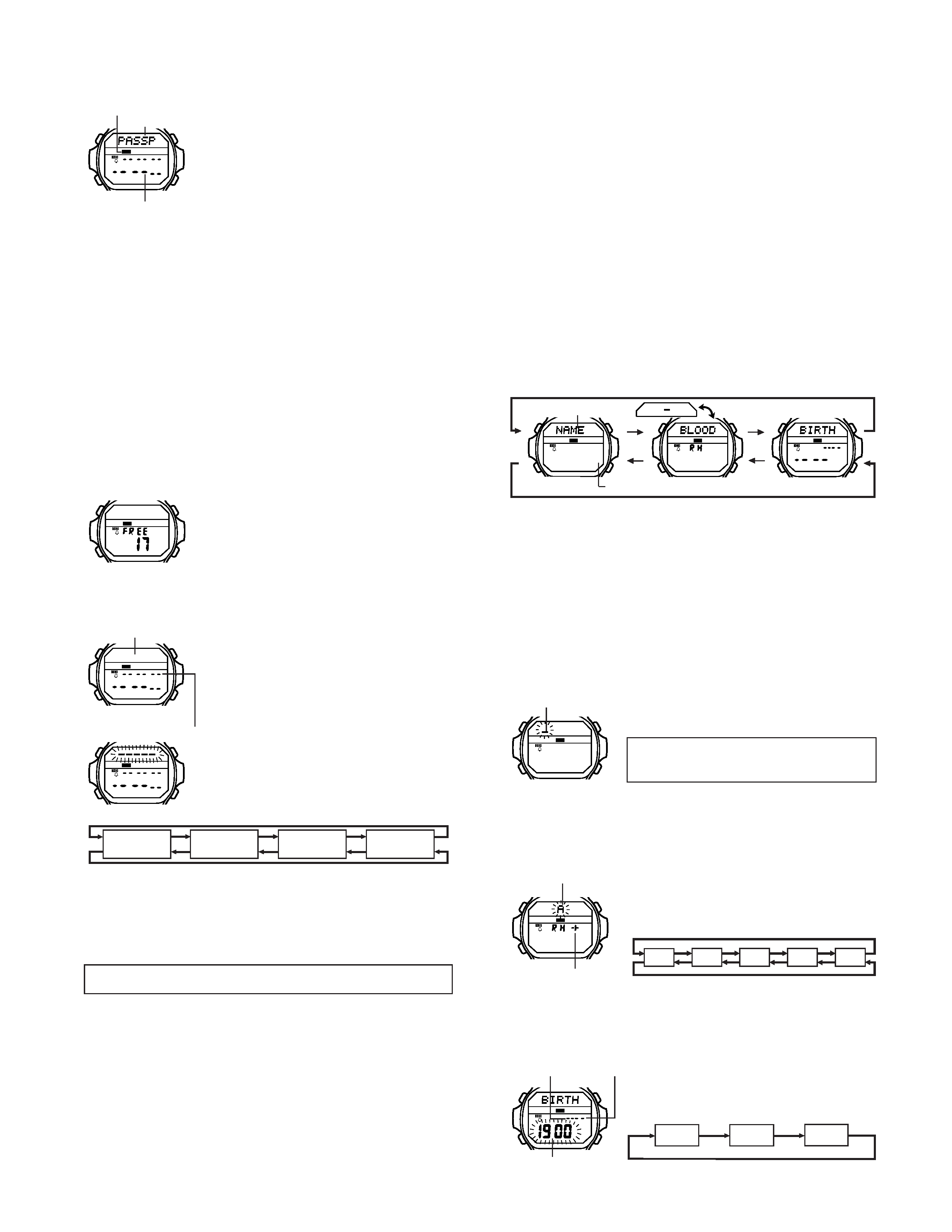
SERVICE MANUAL
& PARTS LIST
(WITHOUT PRICE)
QW-1673
MODULE NO.
R
REF. NO. S/M-585
JANUARY 1998
MRG-200
INDEX

CONTENTS
Page
1. SPECIFICATIONS: QW-1673 ...................................................................... 1
2. OPERATION CHART: QW-1673 ................................................................. 2
3. DRAWINGS ................................................................................................. 5
3-1. BLOCK DIAGRAMS: QW-1673 .....................................................................
5
3-2. CHECKING TERMINALS AND COMPONENTS: QW-1673 ..........................
6
4. EXPLODED VIEW: QW-1673 ...................................................................... 7
5. PARTS LIST: QW-1673 ............................................................................... 8
6. PRECAUTIONS FOR REPAIR: QW-1673 .................................................. 9
6-1. AC (ALL CLEAR) AND REMOVING OF MODULE .......................................
9
6-2. ACCURACY CHECKING ...............................................................................
9

-- 1 --
1. SPECIFICATIONS: QW-1673
Battery
CR1616
Battery life
Approx. 2 years
Current consumption
1.38
µA maximum
Alarm system
Piezo plate on Back cover
Accuracy
±15 sec./month
Accuracy setting system Trimmer capacitor
Accuracy checking
See page 9
Accuracy setting
±0.25~0.35 sec./day
Functions
·Shock resistant (G-Shock)
·Electro-luminescent backlight
·Contact Code function
Memory capacity: up to 20 sets of data, each set including name and
telephone number
Other: Auto sort function, remaining memory display
·Identification (ID) function
Memory capacity: up to 20 sets of data, each including title and number
Other: Built -in titles : PASSPORT, LICENSE, CREDIT
Auto sort, remaining memory display
*Memories shared between Contact code and Identification
·Vital Statistics function
Name (20 characters), blood type (RH factor/ABO type),
date of birth (year, month, date)
·1/100 sec. stopwatch
Measuring capacity: 23:59'59.99"
Measuring mode: Elapsed time, split time, 1st-2nd place times
· Daily alarm
· Hourly time signals
· Regular timekeeping: Hr, min, sec, pm, mo date, day
· Auto-calendar (Pre-programmed unit the year 2039)
·12/24-hour formats
Item
Detail

-- 2 --
2. OPERATION CHART: QW-1673
GENERAL GUIDE
· Press C to change from mode to mode. Each mode is explained in detail on the
following pages.
· In any mode, press E to illuminate the display for about three seconds.
P
AB
D
C
E
Contact Code Mode
v
v
v
v
Identification (ID) Mode
Vital Statistics Mode
v
v
Timekeeping Mode
Alarm Mode
Stopwatch Mode
TIMEKEEPING MODE
In addition to normal timekeeping, the Timekeeping Mode
is also used to set the current time and date, and to turn the
EL alarm on and off.
· In the Timekeeping Mode, graphic area indicates counting
of seconds.
To set the time and date
1. Press A while in the Timekeeping Mode. The seconds
digits flash on the display because they are
selected.
2. Press C to change the selection in the following
sequence.
Seconds
Hour
Minutes
12/24-hour
format
Year
Month
Day
3. While the seconds digits are selected (flashing), press D to reset the seconds to 00.
If you press D while the seconds count is in the range of 30 to 59, the seconds are
reset to 00 and 1 is added to the minutes. If the seconds count is in the range of 00
to 29, the minutes count is unchanged.
4. While any other digits (besides seconds) are selected (flashing), press D to increase
the number. While the 12/24-hour setting is selected, press D to switch between the
two formats.
· Holding down D changes the current selection at high speed.
· When the 12-hour format is selected, the 12H indicator appears on the display. With
the 12-hour format, the P (PM) indicator appears on the display to indicate "p.m."
times. There is no indicator for "a.m." times.
· Selecting the 24-hour format causes the 24H and the 24 indicators to appear on the
display.
5. After you set the time and date, press A to return to the Timekeeping Mode.
· The day of the week is automatically set in accordance with the date.
· The date can be set within the range of January 1, 1995 to December 31, 2039.
· If you do not operate any button for a few minutes while a selection is flashing, the
flashing stops and the watch goes back to the Timekeeping Mode automatically.
About the backlight
In any mode, press E to illuminate the display for about
three seconds. If the EL alarm is turned on, the backlight
flashes whenever a daily alarm or hourly time signal sounds.
Note
· For details on using the alarm function, see "ALARM
MODE".
· The backlight of the watch employs an electro-luminescent
(EL) light, which loses illuminating power after very long
use.
· The backlight remains lit for about three seconds from the point you press E , even if
it already lit when you press E . If you keep E depressed for one or two minutes, the
backlight will automatically turn off.
· The illumination provided by the backlight may be hard to see when viewed under
direct sunlight.
· The backlight automatically stops illuminating whenever an alarm sounds.
· The watch will emit an audible sound whenever the display is illuminated. This is caused
by a transistor that vibrates when the EL panel lights up. It does not indicate malfunction
of the watch.
To turn the EL alarm on and off
In the Timekeeping Mode, hold down D for one or two seconds to turn the EL alarm on
and off.
· An EL alarm on indicator (
) appears on the display to indicate that the EL alarm is
turned on. The indicator disappears when you turn the EL alarm off.
· When an alarm is reached while the EL alarm is turned on, the flashing of the backlight
and the timing of the alarm tones may not be exactly matched. This is normal and does
not indicate malfunction.
P
AB
D
C
Month Day
Year
Minutes
Seconds
PM indicator
Hour
Day of
week
Graphic area
CONTACT CODE MODE
The Contact Code Mode lets you store up to 20* sets of
contact data (such as telephone numbers). Stored data is
sorted automatically into alphabetic sequence based on the
text area text.
* The Contact Code Mode shares memory with the
Identification (ID) Mode. This means that the maximum
number of Contact Code Mode entries you can store is
reduced by one each time you store Identification Mode.
To check remaining memory
In the Contact Code Mode, hold down B and D to display
how much memory remains for input of data. The value that
appears shows how many more data items (Contact Code
Mode and ID Mode) you can input.
· This watch has three built-in ID Mode titles, which are programmed in memory when
you first purchase the watch and which are automatically set whenever the watch's
battery is replaced. Because of this, the remaining memory display shows a value of
17 (20 3) whenever it is performed immediately after you purchase the watch or
have the battery changed.
To input new Contact Code data
1. In the Contact Code Mode, press B or D until the new
data screen appears.
· If there is no Contact Code data stored in memory yet, the
new data screen appears as soon as you enter the Contact
Code Mode.
· If the message FULL appears in the text area, it means
that memory is full. To store more data, you will first have
to delete some of the data stored in memory.
2. Press A and a cursor appears in the text area.
3. Input a name in the text area and a contact number in the
number area.
· You can input up to eight characters in the text area, and 12 digits in the number area.
Use B and D to input characters, and C to move the cursor around the display.
For details, see "How to input characters".
· Make sure that you distinguish between the letter O and the number 0 (zero). Inputting
a zero for the letter O will affect automatic sorting.
4. After inputting your data, press A to store it and return to the Contact Code Mode.
· The text area can show only five characters at a time, so longer messages scroll
continuously right to left.
To recall Contact Code data
In the Contact Code Mode, press D to scroll forward through stored data items or B to
scroll in reverse.
· Holding down either button scrolls through the data at high speed.
· The data item that is displayed when you exit the Contact Code Mode is still displayed
the next time you enter the Contact Code Mode.
To edit Contact Code data items
1. In the Contact Code Mode, scroll through the data items and display the one you want
to edit.
2. Press A and a cursor appears in the text area.
3. Use C to move the cursor to the character you want to change.
4. Change the character.
· See "How to input characters" for details.
5. After making the changes that you want, press A to store them and return to the
Contact Code Mode.
To delete Contact Code data
1. In the Contact Code Mode, scroll through the data items and display the one you want
to delete.
2. Press A and a cursor appears in the text area.
3. Press B and D at the same time to delete the Contact Code data item.
· At this time the cursor appears in the text area, ready for input.
4. Input data or press A to return to the Contact Code Mode.
AB
D
C
AB
D
C
Number area
Text area
Mode indicator
AB
D
C
Cursor
Text area
Number area
[New Data Screen]
EL alarm on indicator
P
AB
D
C
E

-- 3 --
D
AB
AB
D
C
To edit ID Mode data items
1. In the ID Mode, scroll through the data items and display the one you want to edit.
2. Press A and the characters in the text area begin to flash.
· You can also use this procedure to edit built-in title names.
3. Use C to move the cursor to the character you want to change.
4. Change the character.
· See "How to input characters" for details.
5. After making the changes that you want, press A to store them and return to the ID
Mode.
To delete ID Mode data items
1. In the ID Mode, scroll through the data items and display the one you want to delete.
2. Press A and the characters in the text area begin to flash.
3. Press B and D at the same time to delete the ID data item.
4. Press A to return to the ID Mode.
VITAL STATISTICS MODE
The Vital Statistics Mode provides space in memory for storage of your name, blood
type, and the date of your birth.
To recall Vital Statistics data
In the Vital Statistics Mode, press D or B to change the data on the display in the
following sequence.
Press D
Press B
· The name display always appears first whenever you enter the Vital Statistics Mode.
Important!
· In the blood type display, the text area shows the blood type (A, B, O, AB) and
the number area indicates the Rh factor (+ or ). If no blood type data is stored in
memory (after you purchase the watch or have the battery replaced), the text
area shows "" and the number area shows "RH". Since these indicators can
easily be misunderstood as meaning "RH negative," we recommend that you
input the correct blood type data as soon as possible when necessary.
· Use the Vital Statistics Mode to store your own personal data (name, blood type, date
of birth). Once you input your personal data, take care that the watch is not borrowed
by another person. Otherwise, emergency medical personnel may assume that your
data in the Vital Statistics Mode applies to the person who borrowed the watch.
· Data stored in the Vital Statistics Mode is cleared when you have the battery of the
watch replaced. Be sure to input data again after battery replacement.
To input your name
1. In the Vital Statistics Mode, display the NAME screen.
2. Press A and a cursor appears in the text area.
3. Input your name into the text area.
· You can input up to 20 characters for your name.
Use B and D to input characters, and C to move
the cursor around the display. For details, see "How to
input characters".
· You can clear the characters currently input for the name by pressing B and D at the
same time.
4. After inputting your data, press A to store it and return to the normal NAME screen.
· The text area can show only five characters at a time, so a longer name scrolls
continuously right to left.
To input your blood type
1. In the Vital Statistics Mode, display the BLOOD screen.
2. Press A and the blood type ABO appears in the text
area.
3. Use B and
to scroll through the available blood types
in the following sequence:
Press D
B
-
A
O
AB
Press B
4. Press C to advance to specification of the Rh factor.
· At this time the current Rh factor (xx or *) will flash on the display.
5. Press B or D to select either xx (negative) or * (positive).
6. After inputting your data, press A to store it and return to the normal BLOOD screen.
To input the date of your birth
1. In the Vital Statistics Mode, display the BIRTH screen.
2. Press A and the year digits flash in the number area
because they are
selected.
3. Press C to change the selection in the following
sequence:
Month
Year
Day
AB
D
C
[New Data Screen]
AB
D
C
Text area
Number area
IDENTIFICATION (ID) MODE
With the Identification (ID) Mode, you can input up to 20*
sets of data, each of which contains a title (such as passport,
credit card, etc.) and a number. Data is automatically sorted
into the alphabetic sequence of the titles.
* The ID Mode shares memory with the Contact Code Mode.
This means that the maximum number of ID Mode entries
you can store is reduced by one each time you store
Contact Code Mode.
Important!
The ID Mode is useful for storing important data like passport numbers, license numbers,
credit card numbers, etc. Note, however, that storing such important data in the watch's
memory runs the risk of it being misused should you lend the watch to someone, or should
the watch become lost or stolen. Because of this, the manufacturer strongly recommends
that you store such important information in coded form that cannot be understood by
others.
Note that CASIO COMPUTER CO., LTD. shall not be held liable to you or any third party
for any losses or damages suffered through the misuse of data stored in the memory of
this watch.
About titles
· This watch has three built-in ID Mode titles: PASSPORT, LICENSE, and
CREDIT (credit card). You can use these built-in titles as they are, append eight
more characters to a built-in title (to indicate a credit card company name, for example),
or change a built-in title to a different one.
· In addition to the three built-in titles, you can also input your own titles, up to eight
characters long.
· You can input more than one set of data using the same title.
About automatic sorting
ID Mode data items are automatically sorted according to their titles. The three built-in
titles come first, followed by the titles you input, in alphabetical order.
To check remaining memory
In the ID Mode, hold down B and D to display how much
memory remains for input of data. The value that appears
shows how many more data items (Contact Code Mode and
Identification Mode) you can input.
· This watch has three built-in ID Mode titles, which are
programmed in memory when you first purchase the watch
and which are automatically set whenever the watch's
battery is replaced. Because of this, the remaining memory
display shows a value of 17 (20 3) whenever it is
performed immediately after you purchase the watch or
have the battery changed.
To input new ID Mode data
1. In the ID Mode, press B or D until the text area of the
display shows either one of the built-in titles or the new
data screen.
· If the message FULL appears in the text area, it means
that memory is full. To store more data, you will first have
to delete some of the data already stored in memory.
2. Press A and the characters in the text area begin to
flash.
3. Use D and B to display a built-in title or new title input
(-----). Each press of B and D changes the
selected title in the following sequence.
Press D
PASSP?
(PASSPORT)
LICEN?
(LICENSE)
CREDI?
(CREDIT)
-----
Press B
· The built-in titles PASSP, LICEN, and CREDI always appear in the above
sequence, along with the display for input of a new title. Titles you previously created
when inputting other data do not appear.
· If you want to input your own title for the data, select -----.
4. Press C and a cursor appears in the text area.
5. Input a title in the text area and a number in the number area.
· You can input up to eight characters in the text area, and 12 digits in the number area.
Use B and D to input characters, and C to move the cursor around the display.
For details, see "How to input characters".
· If you are using a built-in title, you can append up to eight characters to the built-in title.
· To use a built-in title as it is without appending text, press C eight times to move the
cursor to the number area.
6. After inputting your data, press A to store it and return to the normal ID Mode data
screen.
· The text area can show only five characters at a time, so longer titles scroll continuously
right to left.
To recall ID Mode data
In the ID Mode, press D to scroll forward through stored data items or B to scroll in
reverse.
· Holding down either button scrolls through the data at high speed.
· The data item that is displayed when you exit the ID Mode is still displayed the next
time you enter the ID Mode.
AB
D
C
Text area
Name
Date of Birth
Blood type
Number area
AB
D
C
Cursor
AB
D
C
Text area
Mode indicator
Number area
D
C
Blood type ABO
Rh factor
AB
D
C
Month
Day
Year
